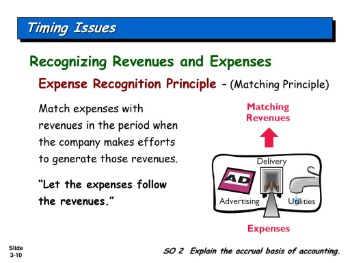
Further, the use of NLP can aid text mining and analysis of social media data such as tweets, Instagram posts, and Facebook posts, which impact trading decisions. Yet another exciting facet is the use of reinforcement learning-based AI models, which can adjust to dynamically changing market conditions. Thus, AI/ML models enable traders to make more informed decisions, manage risk, and maximize profits. Past studies have developed AI models that are capable of replicating the performance of stock indexes (known as index tracking strategy) and constructing efficient portfolios with no human intervention.
Portfolio Valuation
According to the 2021 research report “Money and Machines,” by Savanta and Oracle, 85% of business leaders want help from artificial intelligence. The true challenge will be for finance chiefs to identify where automation could transform their organizations. Further, they should check whether the opportunities to automate are in areas that consume valuable resources and slow down operations. Finally, CFOs must remember that the success of niche technologies will depend on the capabilities of the people using them. First, using HistCite and considering the sample of 892 studies, we computed, for each year, the number of publications related to the topic “AI in Finance”.
AI for Better Finance: Real-World Use Cases and Examples
Having good credit makes it easier to access favorable financing options, land jobs and rent apartments. So many of life’s necessities hinge on credit history, which makes the approval process https://www.adprun.net/ for loans and cards important. We are looking for an Accountant who will be responsible for accounting of the international group of IT Companies, and participating in reporting processes.
AI Companies Managing Financial Risk

With a Copilot, each Wealth Manager becomes many times more efficient and accurate in their work, multiplying their value to a financial services firm. By leveraging financial models, institutions can make faster and more informed decisions in response to changing market conditions. To extract relevant insights, They can use models to analyze unstructured data sources, such as news articles, social media feeds, and research reports.
The future of your industry starts here.
Intelligent automation has the capacity to transform financial services organizations and enhance customer interactions. The possibilities of automation help the finance teams to make the best use of data. AI assistants, such as chatbots, use AI to generate personalized financial advice and natural language processing to provide instant, self-help customer service. The platform lets investors buy, sell and operate single-family homes through its SaaS and expert services.
IoT Data Analytics: Types, Applications, and Implementation Guide
We can see that our sample exhibits significant geographical heterogeneity, as it covers 74 countries across all continents; however, the most investigated areas are three, that is Europe, the US and China. These results corroborate the fact that the above-mentioned regions are the leaders of the AI-driven financial industry, as suggested by PwC (2017). The United States, in particular, are considered the “early adopters” of AI and are likely to benefit the most from this source of competitive advantage. More lately, emerging countries in Southeast Asia and the Middle East have received growing interest.
Wendy’s is using Alphabet’s Google Cloud to power its Fresh AI platform that it is testing at some of its drive-thrus. Meanwhile, QSRs such as Del Taco, owned by Jack in the Box, Rally’s, Checker’s and CKE have used solutions from companies such as Presto Automation, Hi Auto tech, OpenCity, and Valyant AI. The voice-ordering technology will be shut off at all locations by July 26 of this year.
By analyzing intricate patterns in transaction data sets, AI solutions allow financial organizations to improve risk management, which includes security, fraud, anti-money laundering (AML), know your customer (KYC) and compliance initiatives. AI is also changing the way financial organizations engage with customers, predicting their behavior and understanding their purchase preferences. This enables more personalized interactions, faster and more accurate customer support, credit scoring refinements and innovative products and services. For this purpose, sentiment analysis extracts investor sentiment from social media platforms (e.g. StockTwits, Yahoo-finance, eastmoney.com) through natural language processing and data mining techniques, and classifies it into negative or positive (Yin et al. 2020). The resulting sentiment is regarded either as a risk factor in asset pricing models, an input to forecast asset price direction, or an intraday stock index return (Houlihan and Creamer 2021; Renault 2017).

The most important key figures provide you with a compact summary of the topic of “Artificial intelligence (AI) in finance” and take you straight to the corresponding statistics. The value of AI is that it augments human capabilities and frees your employees up for more strategic tasks. Oracle’s AI is directly interactive with user behavior, for example, showing a list of the most likely values that an end-user would pick. After scrutinising some relevant features of the papers, we make a step forward and outline a taxonomy of AI applications used in Finance and tackled by previous literature. The main uses of AI in Finance and the papers that address each of them are summarised in Table 7.
- “This is the goofiest and likely most dangerous concentration of overvaluation I’ve seen in 34 years investing and throughout financial history,” Bloomstran said.
- All of these manual activities tend to make the finance function costly, time-consuming, and slow to adapt.
- A Vectra case study provides an overview of its work to help a prominent healthcare group prevent security attacks.
- A valuable research area that should be further explored concerns the incorporation of text-based input data, such as tweets, blogs, and comments, for option price prediction (Jang and Lee 2019).
TQ Tezos aims to ensure that organizations have the tools they need to bring ideas to life across industries like fintech, healthcare and more. The following companies are just a few examples of how AI-infused technology is helping financial institutions make better trades. Chris Bloomstran, the president and chief investor of Semper Augustus, rang the alarm on tech valuations in an X post on Wednesday.

Artificial intelligence (AI) refers to the use of machines to simulate human intelligence. AI is accomplished by computers and software, and uses data analysis and rules-based algorithms. It can entail very sophisticated applications and encompass a very wide range of applications. Artificial intelligence in investing and finance takes many forms, but the tremendous amount of data available on financial markets and financial market prices provides many opportunities to apply AI to investing and trading. The ability to trade markets in near-instantaneous time, and strong computing power, has resulted in brokerage companies providing customers with very sophisticated order entry tools that allow computers to monitor trade entry and exit. The diligent use of AI for trading and trade management, if used properly, can greatly reduce the emotional aspect of trading.
As we have illustrated, AI in investing encompasses a lot of tools that can be used by professional and individual investors and traders. If you want to incorporate the use of AI into your investing or trading, you may consider taking the steps that follow. AI can help companies https://www.accountingcoaching.online/the-causes-of-depreciation-accountingtools/ drive accountability transparency and meet their governance and regulatory obligations. For example, financial institutions want to be able to weed out implicit bias and uncertainty in applying the power of AI to fight money laundering and other financial crimes.
Enova has a lending platform powered by AI and ML, and the technologies help with advanced financial analytics and credit assessment. The company has provided over 8 million customers with over $49 billion in loans and financing with market-leading products guiding them to improve their financial health. They have also been helping small businesses and non-prime customers to help solve real-life problems, which include emergency costs and bank loans. Thus, banks must use personalized banking to gain a competitive advantage, improving customer engagement and loyalty.
Future work should study whether these abstract features can be inferred from the model and used as valid input data to simplify the deep network structure (Galeshchuk and Mukherjee 2017). Moreover, the performance of foreign exchange trading models should be assessed in financial distressed times. Further in accounting what is the meaning of cr research may also compare the predictive performance of advanced times series models, such as genetic algorithms and hybrid NNs, for forex trading purposes (Amelot et al. 2021). The second sub-stream focuses on mortgage and loan default prediction (Feldman and Gross 2005; Episcopos, Pericli, and Hu, 1998).
By automating repetitive, manual tasks such as document digitization, data entry, and identity verification, financial institutions can expand their offerings to maintain a competitive edge. Financial Institutions have much to gain from implementing AI to improve revenues and reduce costs. Accenture estimates that Financial Services companies will add over $1 Trillion in value to global banks by 2035.